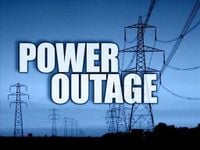On two consecutive mornings in late September 2025, residents of central North Carolina found themselves unexpectedly in the dark, as unrelated but strikingly similar incidents involving fallen trees wiped out electricity for hundreds of homes and businesses in Raleigh and Asheboro. These outages not only disrupted daily routines but also underscored the fragility of local infrastructure when faced with even routine construction or the unpredictable hazards of nature.
In Raleigh, the trouble started before most people had finished their morning coffee on Thursday, September 25. According to WNCN, a construction crew working near the bustling Crabtree Valley Mall accidentally knocked over a tree before 9:45 a.m. The tree, unfortunately, landed right on top of a set of power lines. The result? A widespread blackout that left 921 Duke Energy customers without electricity. The outage didn’t just hit homes—it also darkened traffic lights at the busy intersection of Blue Ridge Road and Glen Eden Drive, creating a headache for drivers already navigating the morning rush.
With the traffic signals out, Raleigh Police Department officers quickly stepped in, directing vehicles through the intersection to keep things moving and, more importantly, safe. The outage map maintained by Duke Energy lit up with the affected area, showing the full scope of the disruption. For nearly two hours, the community coped with the inconvenience—until, as reported by WNCN, power was restored by 11:30 a.m. Officers were finally able to step aside, and the city’s daily rhythm resumed.
Just a day earlier, a similar scene played out in Asheboro, about an hour’s drive southwest of Raleigh. According to WXII 12, a large tree toppled onto a major power line at the intersection of Salisbury and White Oak streets. This time, the cause was not immediately known—no construction crew was to blame, just the unpredictable hand of fate (or perhaps a gust of wind, though officials didn’t specify). The impact, however, was just as real: more than 400 Duke Energy customers found themselves without power as the sun set on September 24.
Firefighters in Asheboro responded swiftly, and Duke Energy crews were soon on the scene, working to restore service to the remaining residents left in the dark. Fire officials took the opportunity to remind drivers to be especially careful when approaching intersections where traffic signals might be out. “Fire crews are reminding drivers to be vigilant if they encounter a traffic light that is out,” WXII 12 reported, a gentle nudge to the community to stay alert and safe.
While neither outage lasted more than a few hours, both incidents were a stark reminder of how dependent modern life is on a steady flow of electricity—and how quickly that can be interrupted by something as simple as a falling tree. For the 921 customers in Raleigh and the more than 400 in Asheboro, the outages were more than just a minor inconvenience. They disrupted morning routines, forced businesses to pause operations, and, in the case of Raleigh, required police to step in and manage traffic at a major intersection.
For Duke Energy, the back-to-back outages were a test of response time and coordination. In both cities, crews worked efficiently to restore power, minimizing the length of the disruptions. The company’s outage maps, updated in real time, provided residents with information about the scope and estimated duration of the blackouts. That transparency helped calm nerves, even as people waited for the lights—and the coffee makers—to start humming again.
Local officials and first responders also played a crucial role. In Raleigh, the police department’s quick action at Blue Ridge Road and Glen Eden Drive likely prevented accidents and kept traffic flowing as smoothly as possible under the circumstances. In Asheboro, firefighters not only responded to the scene but also used the incident as an opportunity to educate the public about the dangers of unlit intersections. Their advice was simple but vital: treat every darkened traffic signal as a four-way stop, and proceed with caution.
These incidents also raise broader questions about infrastructure vulnerability. North Carolina, like much of the southeastern United States, is no stranger to power outages caused by storms, falling trees, or construction mishaps. But as population growth continues and development expands—especially in fast-growing cities like Raleigh—the risks may increase. Construction near power lines is a common sight, and even with strict safety protocols, accidents can happen. Meanwhile, mature trees, a beloved feature of many neighborhoods, can become hazards during storms or simply due to age and decay.
In the wake of these outages, some residents have called for renewed attention to tree maintenance and construction safety. Others have suggested that more power lines should be buried underground, a costly but effective way to reduce the risk of outages from falling trees. Duke Energy and city officials have acknowledged these concerns in the past, but the challenges—financial, logistical, and environmental—are significant. For now, quick response and clear communication remain the best tools for managing such disruptions.
Despite the inconvenience, both communities demonstrated resilience and cooperation. Neighbors checked on each other, businesses adapted as best they could, and drivers largely heeded the warnings to be careful at darkened intersections. The outages were a reminder that, even in a world increasingly defined by high-tech solutions, sometimes the most basic challenges—like a tree falling in the wrong place at the wrong time—can bring everything to a halt.
Looking ahead, city leaders and utility companies may take these incidents as a cue to revisit their emergency response plans and consider investments in infrastructure upgrades. For residents, the lesson is clear: stay prepared, stay informed, and remember that when the lights go out, a little patience and neighborly spirit can go a long way.
In the end, while the power outages in Raleigh and Asheboro may fade from memory as just another blip in the daily news cycle, they serve as a small but potent reminder of the connections—and vulnerabilities—that tie communities together.




